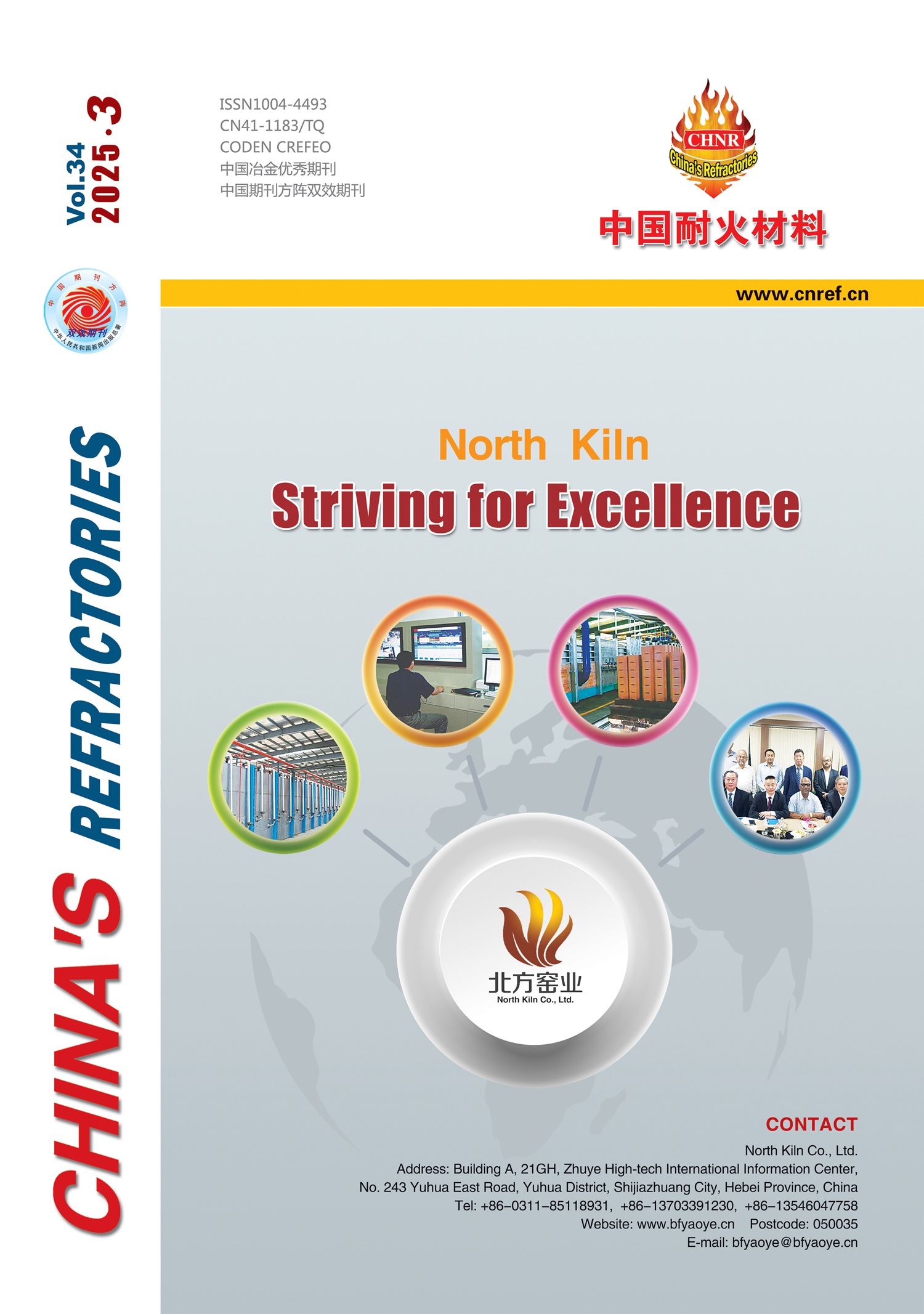
ISSN: 1004-4493
CN: 41-1183/TQ
CODEN CREFEO
中国冶金优秀期刊
中国期刊方阵双效期刊
Sponsor and Authority:Sinosteel LIRR
Editor and Publisher:The Editorial Board of CHINA'S REFRACTORIES
Contact Us
Tel:+86-379-64205961
Email: chnr@nhcl.com.cn
Application Progress of Mullite Based Refractories
ZHANG Wei
Properties of Foamed Ceramics Prepared from Coal Gangue
JI Ying, WU Jiarui, LIU Baolin, WANG Ruiqi
Effect of Ti-Si-Fe Alloy Addition on Structure and Properties of Si3N4 Bonded SiC Refractories
YAO Luyan, QIN Xin, HAN Bingqiang, ZHANG Jinhua, KE Changming
Process and Bonding Performance of ZrO2 Thermal Barrier Coatings with Dense Vertical Cracks by High Energy Plasma Spray
YANG Qinqian, NIU Yunsong, HUANG Di, BAO Zebin, ZHU Shenglong
Preparation and Properties of Al2O3 Aerogels
TONG Tianbai, REN He, LIU Mei, WANG Yicong, FAN Zhaodong
Status and Development of Refractory Materials for Blast Furnace Inner Lining
SUN Saiyang, MA Xiaoqing, ZHANG Ronghui, CHENG Minghui
Preparation of Al4SiC4 by Hot Pressing Sintering with SiC as Raw Material
WEI Haoyu, WANG Li, LIU Shijie, HUANG Ke, XU Yuting, JI Xiaoyu, MA Qing, ZHAI Yukun, WANG Caiyun







